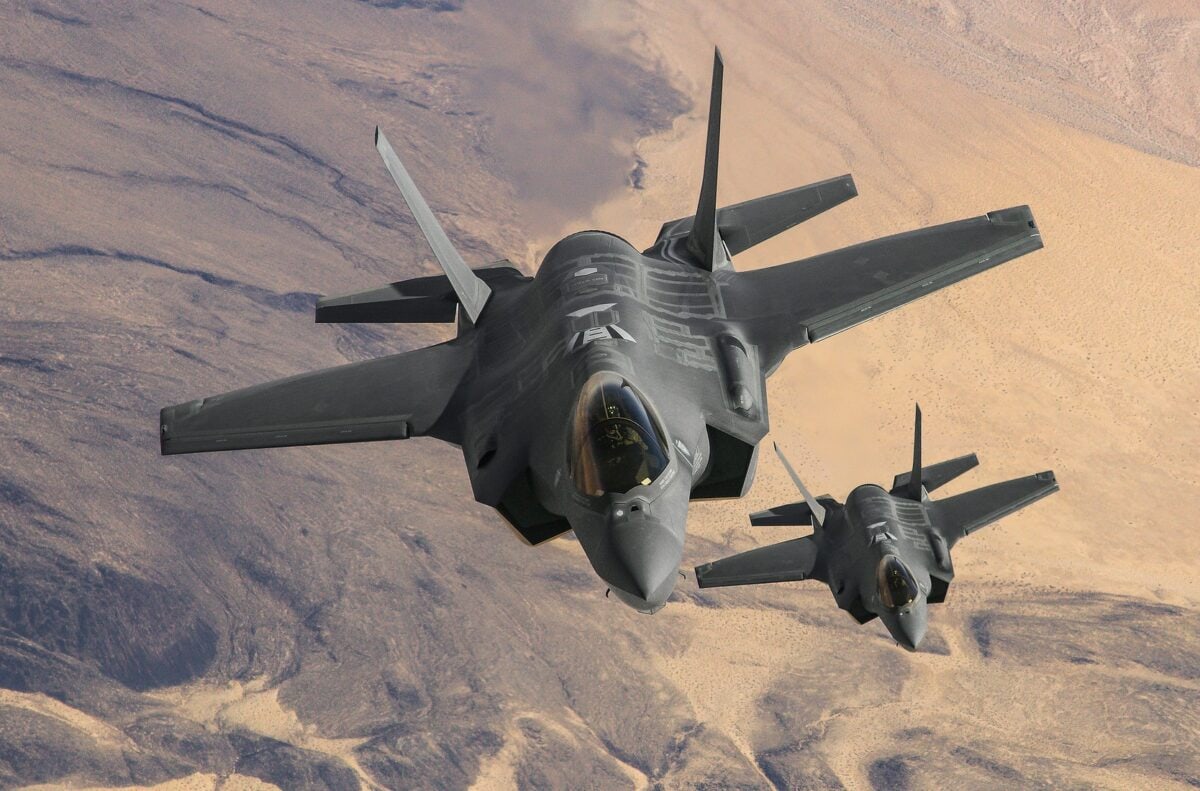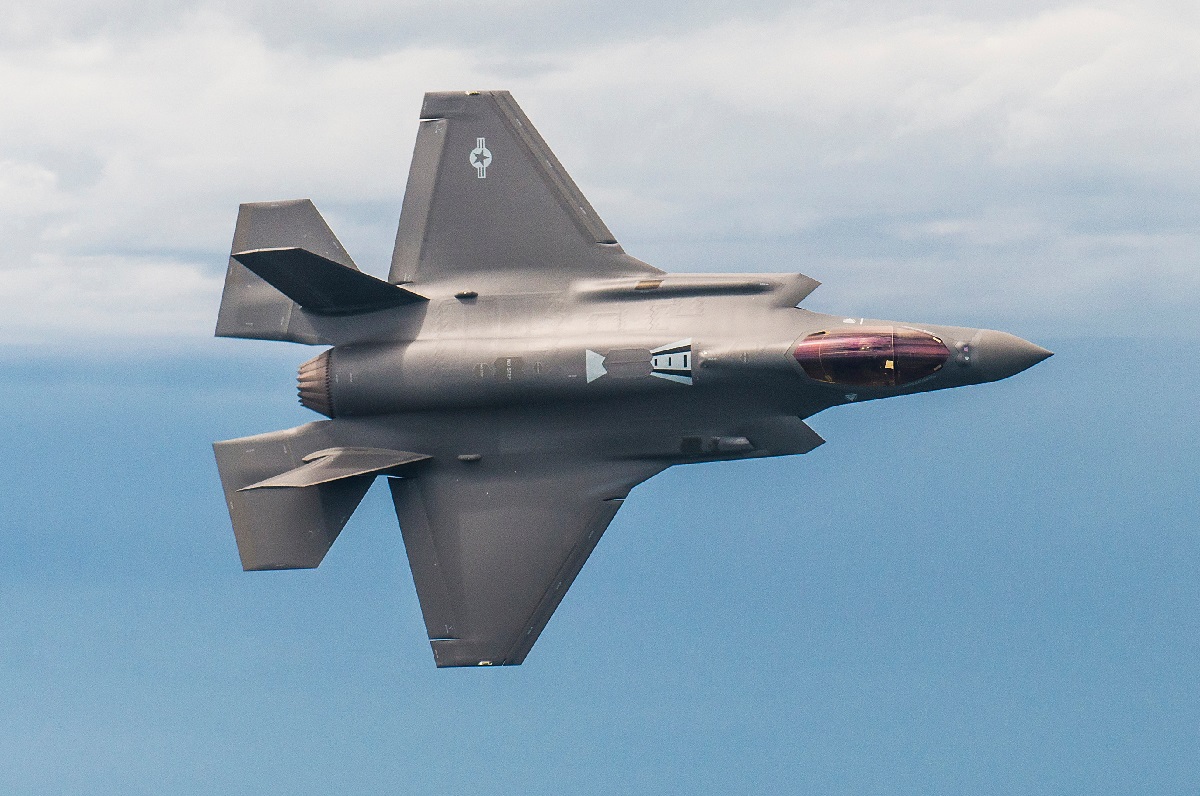The recent decision by the Swiss Federal Council (SFC) to acquire the F-35 Joint Strike Fighter (JSF) as Switzerland’s next-generation air defense aircraft has made it all but official: the F-35 is fast becoming the free world’s dominant fighter.
The SFC’s decision follows close on the heels of similar choices made by Poland and the UAE. It is important to note that these countries, and others such as Israel, Japan, and South Korea, decided to acquire the F-35 based not just on its fifth-generation features, but also because of the global “ecosystem” that has been created to support it, including training, logistics, and maintenance. As a result of the inherently international nature of the F-35 program, many nations were encouraged to acquire the aircraft.
That the F-35 would become the free world’s fighter was predictable. In fact, I said as much some five years ago. In part, this was a function of the program being international from the start. Initial estimates were for some 600-700 international sales. That number has been climbing steadily over the past few years.
The F-35 consortium, which includes the United Kingdom, Italy, the Netherlands, Canada, Turkey, Australia, Norway, and Denmark, has contributed more than $4 billion towards the program’s development costs. The aerospace industries in each of these countries have likewise provided technical support.
Each member of the consortium also became part of a global manufacturing, logistics and sustainment system that supports F-35 operations around the globe. The multi-national nature of the program is one factor that contributed to the decision by non-consortium members to join the F-35 “club.”
Fundamentally, it was the capabilities built into the F-35 JSF that made nation after nation decide that they had to have it. Most obviously, there was the F-35’s advanced stealth features which allowed it to operate and survive in the intense air defense environment of the 21st century. After that, it was the array of sophisticated sensors and computing capabilities that supported new kinds of air-to-air and air-to-ground operations.
The F-35 has also shown itself to be able to rack up kill ratios of up to 20-1 in successive Red Flag air combat exercises, demonstrating the F-35’s ability to enhance the operation of mixed fourth- and fifth-generation fleets. Employing its sophisticated suite of sensors, the F-35 can pass high-quality targeting information to fourth-generation platforms operating at a distance from high-threat air defenses in close to real-time. In addition, these same sensors and battle management software enable the F-35 to serve as both a penetrating ISR and stand-in electronic warfare platform.
Another factor that drives nations to acquire the F-35 is its enhanced interoperability, which adds to the value of any given capability. Nations operating the F-35 can support each other in developing tactics and concepts of operations, providing logistics and sustainment, and sharing intelligence. If all the NATO nations already committed to buying the F-35 go through with their purchases, it will be the largest single air fleet in the alliance.
A good example of interoperability centered on the F-35 is the current deployment of Britain’s Queen Elizabeth aircraft carrier battle group. Currently situated in the South Pacific, the Queen Elizabeth is hosting a squadron of U.S. Marine Corps F-35Bs.
Switzerland is now the fifteenth nation to decide to acquire the F-35. As a key part of its plan to modernize the country’s air defenses, known as Air2030, the SFC announced its intentions to recommend the procurement of 36 F-35As, the conventional takeoff and landing variant operated by the U.S. Air Force, among others. The Swiss Federal Council also proposed buying five Patriot air defense systems.
The SFC conducted a comprehensive technical evaluation which concluded that “The F-35A has the lowest operating costs of all of the candidates evaluated,” the Swiss Federal Council announced.
According to one of the premier U.S. airpower analysts, John Venable, the F-35A beat out its competitors across the board:
“The Swiss evaluators found the networked systems of the F-35A enabled pilots to have more situational awareness and that the stealth fighter was more survivable in all mission areas. The F-35A also achieved the highest grades for product support, efficiency of maintenance and potential for collaboration with other countries.”
Switzerland is also just the most recent country to choose the F-35. Last year, both Poland and the United Arab Emirates (UAE) announced their intentions to acquire it. With 32 F-35s, Poland will have an air capability superior to that of some other major NATO countries. The U.S. Defense Security Cooperation Agency (DSCA) pointed out that not only will selling the F-35 to Poland provide that country with a credible defense capability to deter aggression but would significantly enhance interoperability with U.S. forces.
The UAE has made a formal request to the United States to acquire 50 F-35As. Not only will operating the F-35 provide the UAE and its regional allies with an enhanced deterrent, but it will serve as the basis for greater interoperability with the U.S., NATO, and other regional operators of the F-35.
There are other countries considering acquiring the F-35, including Canada, Finland, and Greece. Romania, which only recently began acquiring the F-16, has suggested that it views this purchase as a bridge to the F-35. Some sources have suggested that India, which already operates several U.S. systems, such as the P-8 anti-submarine warfare aircraft, C-17 aerial transports, and Apache attack helicopters, might be another candidate to acquire the F-35.

Image: Lockheed Martin.
As the F-35 program works through residual supply chain and maintenance issues and deploys the Block IV software that will substantially enhance the platform’s capabilities, the attractiveness of the aircraft to foreign buyers will only increase. At the same time, as my colleague Dr. Loren Thompson has persuasively argued, support costs for the F-35 will only continue to decline. There is no reason why the F-35 will not fulfill its destiny as the free world’s preeminent combat aircraft.
Dr. Daniel Goure is Senior Vice President with the Lexington Institute, a nonprofit public-policy research organization headquartered in Arlington, Virginia. He is involved in a wide range of issues as part of the institute’s national security program. Dr. Goure is also a new Contributing Editor to 1945 as well.

